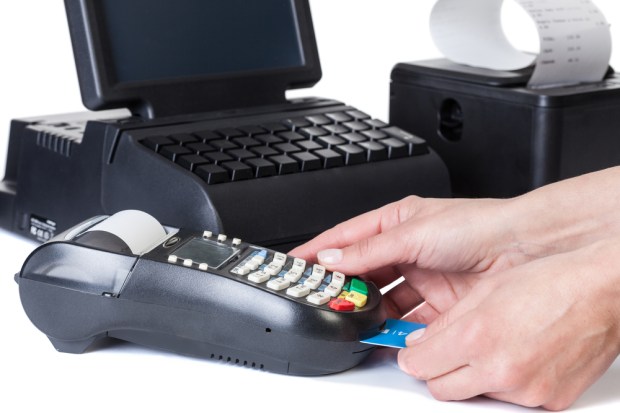Becoming Our Money — And Other Tales From The POS World

Perhaps not since the adoption of chip and PIN payments has there existed so much potential for disruption in the point-of-sale market. The rise of mom-and-pop entrepreneurs, the coffee truck operators, craft makers and others has opened the door for the smaller POS operators to capture new business.
That’s how Andrew Byrne, chief operating officer at London-based payment services firm myPOS, told it during a recent interview with PYMNTS.
The discussion came at a time when small merchants around the world are finally moving past their enduring cash-only policies as they meet consumer demand for digital payments. At the same time, a host of newer POS technology, including touchscreens and Android-based devices, are offering new merchant and customer experiences.
Back in the days when financial, payments and government authorities were encouraging the move to chip cards and the secure, low-cost transactions they offered, “most people were still paying in cash,” Byrne recalled.
And the smallest merchants who wanted to accept cashless payments faced a significant challenge, he said: They generally needed to get their card-accepting equipment from big financial institutions or services providers, who often required hefty monthly fees, minimum spending amounts and other expenses that could cost “a few hundred pounds a month,” a significant threat to those businesses’ margins.
“A lot of the bigger players will not take smaller merchants, or will not do so with a long contract,” Byrne said. The business model at myPOS does not require such contracts, and the fees are designed to be more at the level that mom-and-pops can afford.
That’s not to say someone offering the latest point-of-sale and payments technology can just walk in and win a sale, even with the most willing of merchants. “In some European countries — but not the U.K. — there is a lot of legacy technology,” Byrne noted, often the result of merchants agreeing to multi-year POS deals that have yet to expire. But open APIs, combined with strong development work, can often enable those merchants to find affordable solutions for upgraded payments gear without violating the terms of those contracts, he said.
Those legacy systems might, in fact, do a respectable job of accepting payments and otherwise keeping up a good transaction flow. But as Byrne told it, that older technology lacks the capability to handle value-added services, which are becoming more important for POS and payments products. That especially includes the ability to handle loyalty and gift cards, and the related points and rewards. Merchants struggling to stand out in an increasingly competitive digital environment can use loyalty initiatives to keep their hold on customers.
Other value-added services also help POS service providers win over customers, including those with legacy systems. Those services include collecting payments distantly via payment links sent to customer emails and mobile phones, and processing card-not-present transactions via virtual terminals.
Additionally, the legacy systems cannot always keep up with the impatience of modern consumers. “The public wants quicker and quicker ways to spend their money,” Byrne pointed out.
For the time being, myPOS – which has been around since 2014 – is concentrating on selling its payments services in the United Kingdom and the rest of Europe. “The U.K. is very forward-thinking when it comes to the payments sector,” Byrne said. As well, the growth of the gig economy in the U.K. and mainland Europe presents expanding opportunities to sell more of those services. “There are more and more people who want to be entrepreneurs on a small scale,” he said.
So what’s to keep the bigger POS and payment services providers from simply swooping down and offering their deep expertise to all these new gig workers, freelancers and small businesses? Byrne said he feels protected by the fact that those big companies are doing pretty well for themselves through their “bigger contracts from bigger players,” and their relative lack of the payments ecosystem that the smaller firms have constructed.
Of course, no business, no matter how profitable a niche it might have built, can stand still, and that is doubly true for payments. Byrne said he anticipates an increasingly biometric future. What that means for companies like myPOS is that more consumers will opt to pay via their fingerprints or facial patterns, with authentication at checkout followed by money being deducted from their banking accounts.
“We will become our money,” he said.